Fishing in wet weather can be thrilling – the raindrops rippling on the water, the fresh air, and the fish that seem to bite best when it’s stormy. But without the right gear, a rainy day fishing trip can quickly turn into a soggy, uncomfortable experience.
Waterproofing your clothing and ensuring you stay dry can make the difference between a day spent happily reeling in catches and one spent shivering in soaked layers.
Here’s everything I’ve learned about staying dry, warm, and comfortable when fishing in wet weather.
Why Waterproofing Matters for Wet Weather Fishing
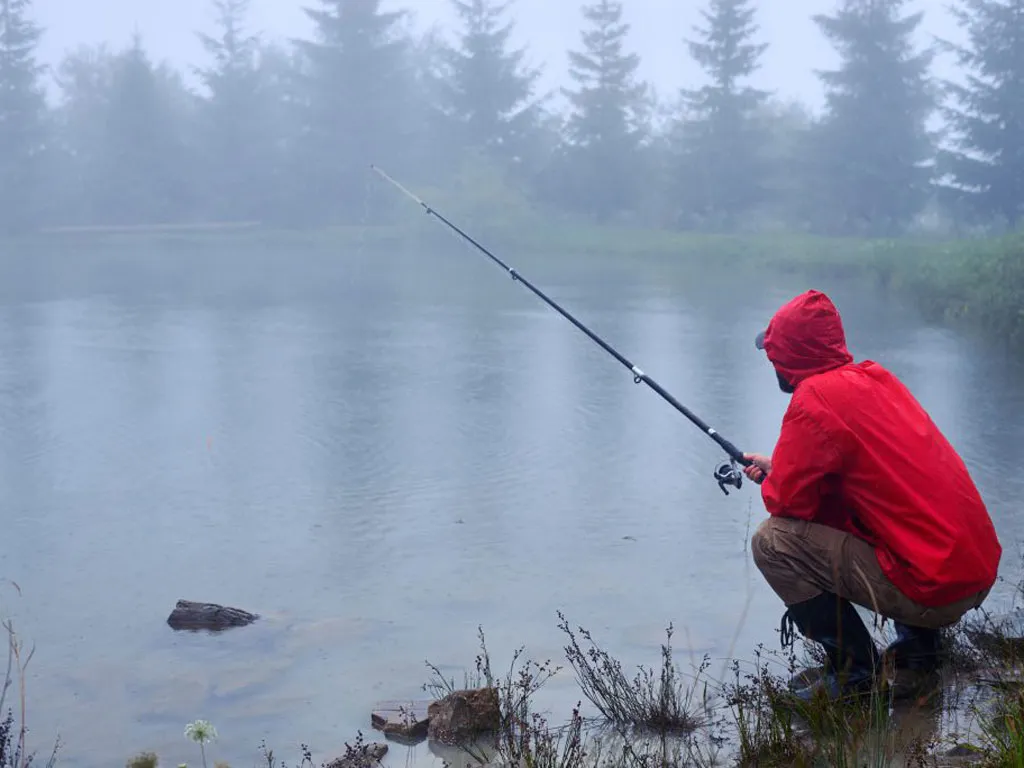
First of all, let’s get into why waterproofing is such a big deal. Wet clothes don’t just make you feel cold – they can sap your energy and make you miserable, and they even pose a real risk to your health.
Being cold and wet on the water can lead to hypothermia faster than you might think, especially in windy or chilly conditions. Keeping dry isn’t just about staying comfortable; it’s about staying safe, too.
Plus, fishing requires you to be patient, quiet, and focused. The more comfortable you are, the longer you can stay out there and concentrate. After all, the best catches don’t always come easily. Preparing your gear, especially your clothing, for wet conditions lets you enjoy your fishing day to the fullest.
For those looking to stay dry from head to toe, footwear is essential. Quality waterproof boots can make all the difference on rainy fishing days – learn more about a great option that combines comfort and durability.
Choosing the Right Waterproof Gear
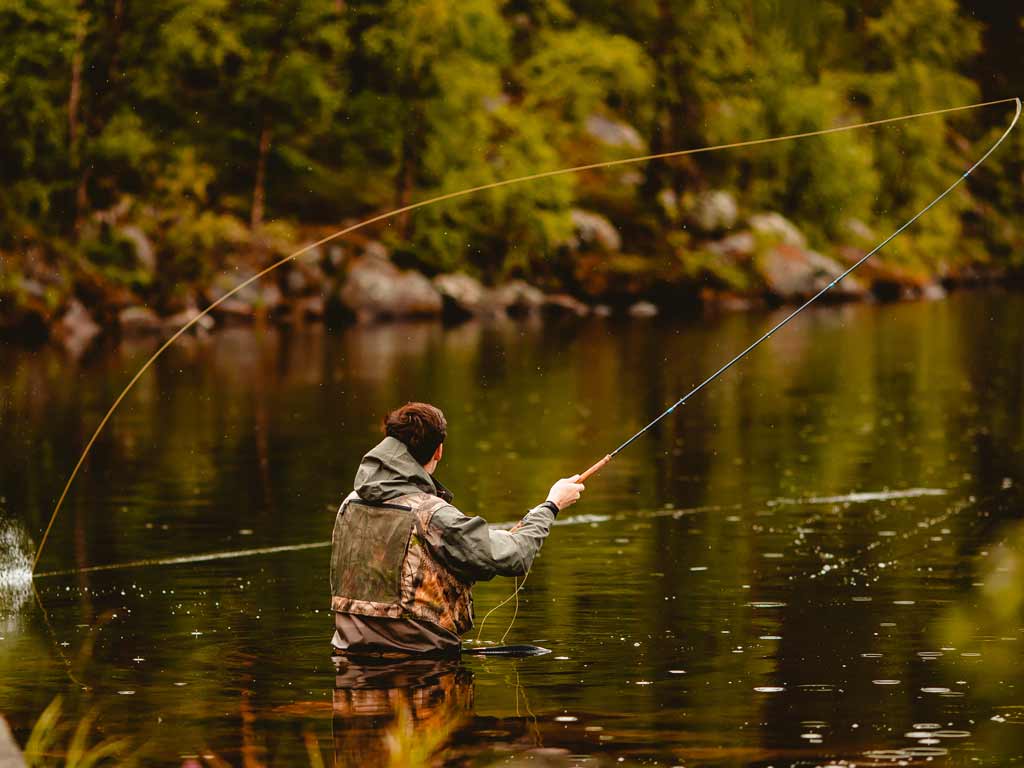
Let’s start with the basics: what you wear. Not all waterproof gear is created equal, and picking the right clothing layers can make a huge difference.
1. Base Layers
The base layer is the one closest to your skin, so it needs to be comfortable and moisture-wicking.
Cotton holds onto moisture and takes forever to dry, so avoid it. Instead, go for synthetic fabrics like polyester or merino wool. They wick sweat away from your skin, keeping you dry and adding a bit of warmth.
2. Insulating Layers
On chilly wet days, an insulating layer is a must. Fleece jackets or vests provide warmth without adding bulk, which is key for maintaining movement and flexibility while fishing.
You want warmth without restricting your range of motion so you can still cast easily and move around as needed.
Lightweight down or synthetic insulated jackets work well, but keep in mind that down isn’t the best in damp conditions unless it’s been treated to resist water.
3. Outer Layers
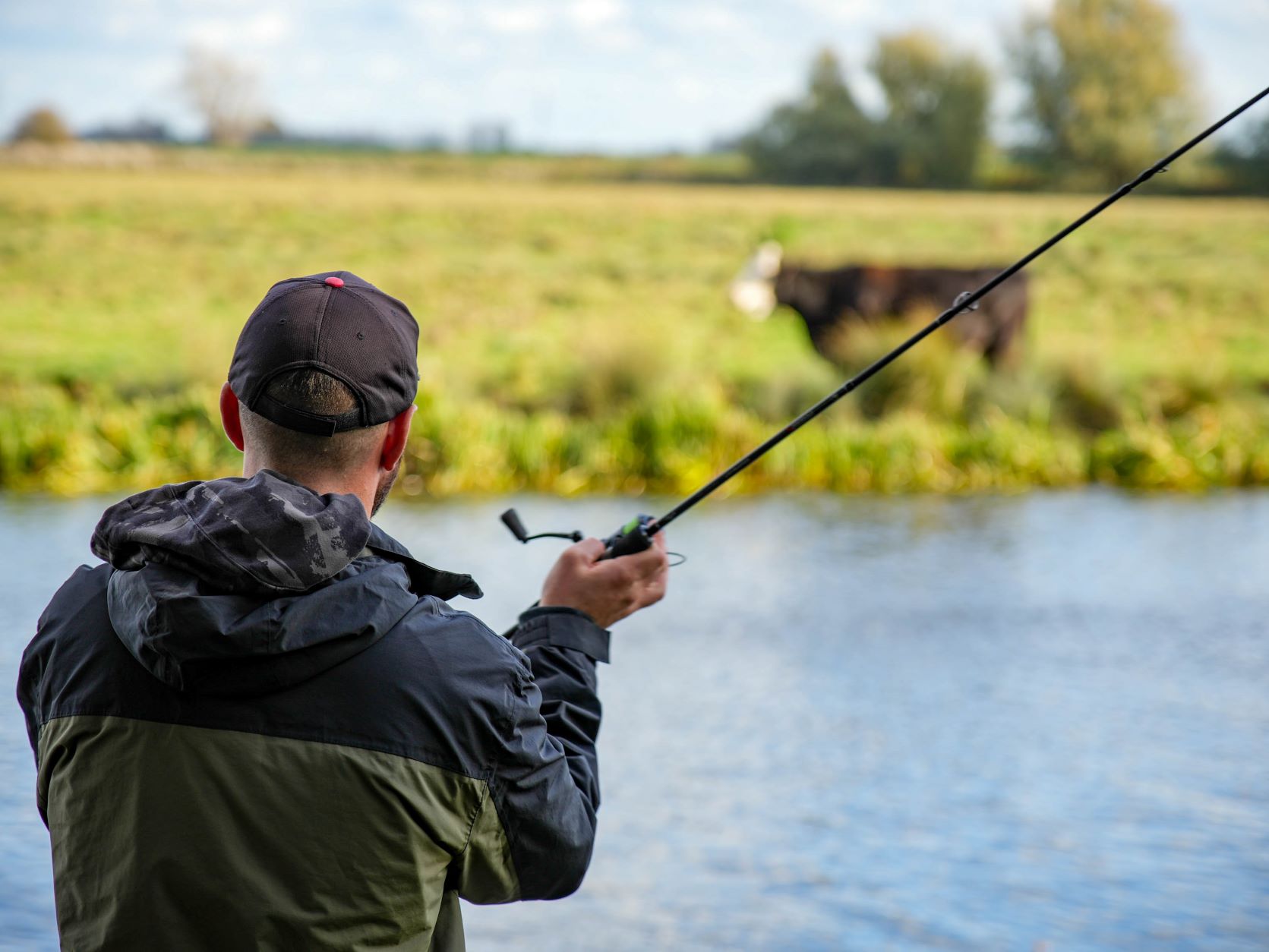
The outer layer, or “shell,” is what keeps the rain and wind at bay. Look for jackets and pants with a waterproof rating – you want something that’s breathable yet able to withstand downpours.
Jackets with Gore-Tex or similar waterproof membranes are ideal because they keep water out while allowing moisture to escape, so you don’t feel clammy inside.
When choosing a jacket, pay attention to features like:
- Adjustable hoods: Hoods with a brim or peak can keep rain out of your eyes.
- Adjustable cuffs and hems: Sealing off the openings stops water from sneaking in.
- Zippers and ventilation: Pit zips or vented back panels let you adjust airflow, so you don’t overheat.
Waterproof pants should also be breathable and ideally have adjustable waistbands or suspenders for a snug fit. Consider bib-style pants for extra protection around your waist and lower back.
Make Sure Your Gear Stays Dry
Even the best waterproof gear can start to let water in over time if not properly maintained. A few simple tricks can keep your clothing waterproof for many fishing trips to come.
1. Use Durable Water Repellent (DWR) Treatments
Most waterproof clothing comes with a Durable Water Repellent (DWR) coating, but it wears off over time. Reapplying a DWR spray restores the coating and helps water bead up and roll off instead of soaking in.
Spray it on your jacket and pants at the start of each fishing season, or whenever you notice water no longer beading up on the surface.
2. Seam Sealing for Extra Protection
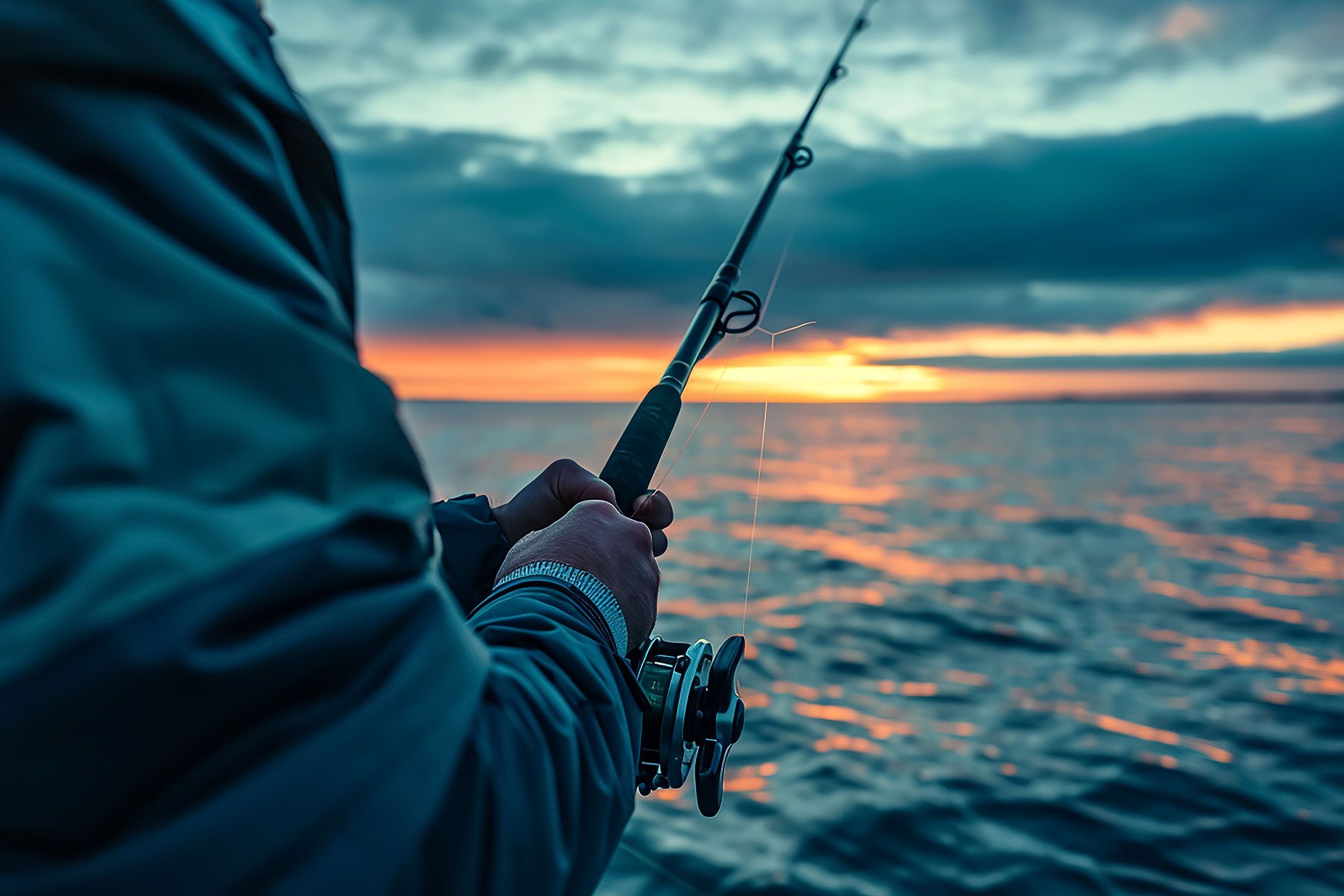
Seams are often the weak points in waterproof clothing. Even if your gear is labeled waterproof, water can sneak in through the seams.
Many manufacturers apply seam tape to reinforce these areas, but if it starts to peel or wear down, you can reapply seam sealer. This simple step reinforces the clothing’s waterproof barrier and ensures you stay dry for longer.
3. Reviving Waterproof Layers in the Dryer
If you have a jacket or pants that seem to have lost their waterproof abilities, try putting them in the dryer on low heat for about 20 minutes.
The heat can help reactivate the DWR layer, making it more effective at repelling water. Just check the care label first to make sure it’s safe to tumble dry.
Accessorize for Wet Weather Fishing
Clothing isn’t the only part of staying dry and comfortable. Accessories make a big difference when you’re facing down the elements.
1. Waterproof Gloves for Warm, Dry Hands
Fishing requires good dexterity, so having cold, wet hands can be frustrating and uncomfortable. Waterproof gloves designed for fishing or other outdoor activities provide a good grip while keeping your hands dry and warm.
Neoprene gloves work well for wet weather, as they’re both waterproof and warm, but make sure they allow you enough movement to handle your rod and line easily.
2. Waterproof Boots and Socks
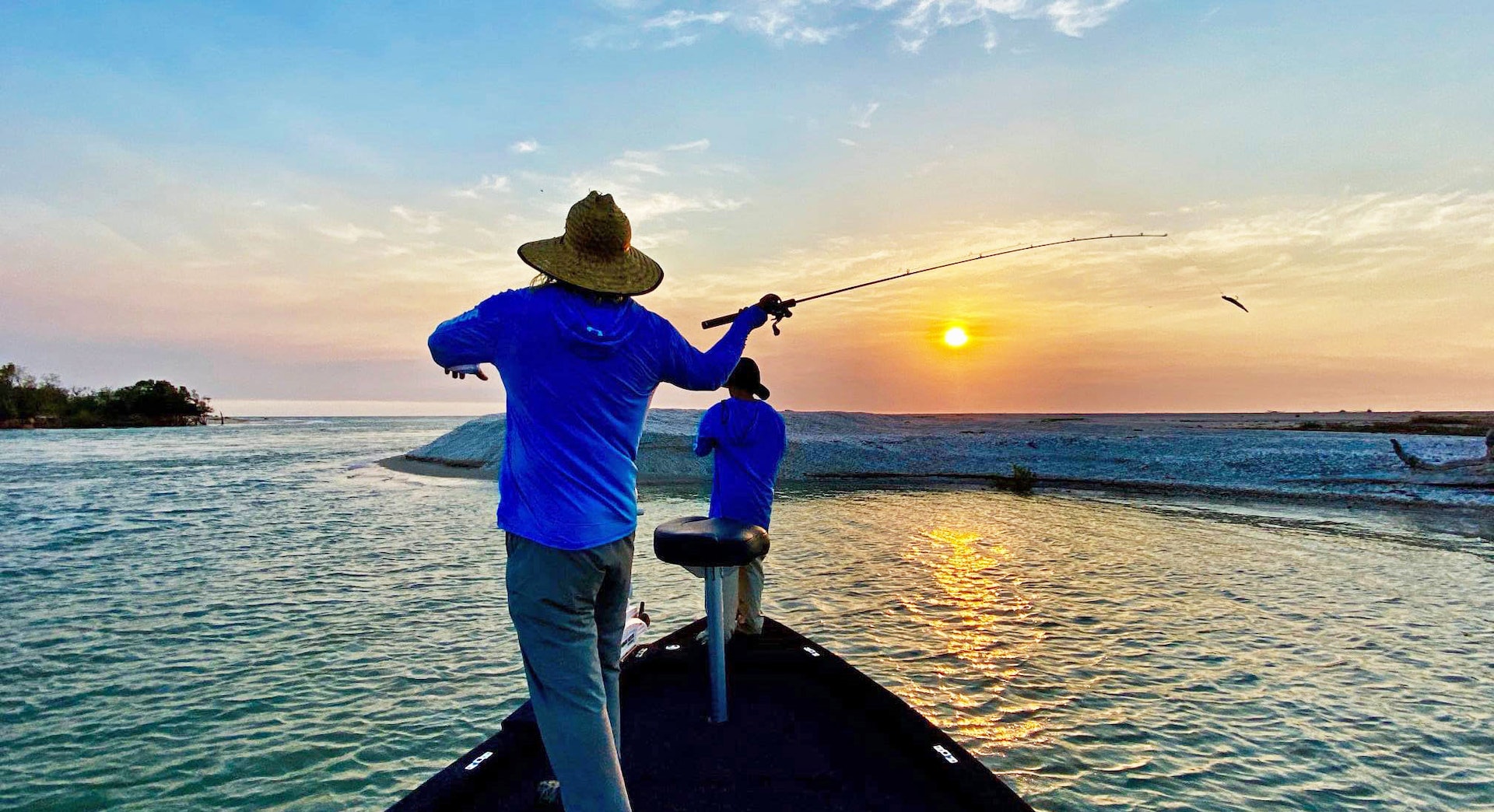
Your feet are often the first to get wet, especially if you’re wading or fishing from shore. Waterproof boots with sturdy soles help keep your feet dry and give you good traction.
Consider adding waterproof socks, like those made of Gore-Tex, for extra protection. For longer trips or especially cold conditions, layer your waterproof socks over wool socks for warmth and comfort.
3. Hats with Brims and Waterproof Hoods
A wide-brimmed hat, combined with a waterproof hood, keeps rain out of your face and eyes, which is invaluable when casting or watching the water for signs of fish.
Look for hats with chin straps if it’s windy, so you’re not chasing after your hat on a gusty day!
Tips for Staying Comfortable and Safe
Beyond waterproofing, there are a few other things you can do to make sure your fishing trip goes smoothly, no matter the weather.
1. Pack Extra Layers and Clothing
Always bring an extra set of clothes and socks, sealed in a dry bag. If you get soaked despite your best efforts, having something dry to change into can be a lifesaver. Even an extra sweatshirt or pair of dry socks can make a huge difference.
2. Bring a Dry Bag for Electronics and Essentials

If you’re bringing electronics, like a phone, GPS, or camera, keep them in a dry bag. Regular backpacks aren’t waterproof, and there’s nothing worse than realizing your phone or camera is soaked.
A dry bag is also handy for storing any essentials you want to keep dry, like snacks or your fishing license.
3. Stay Hydrated and Fuel Up
It’s easy to forget about hydration and snacks when it’s chilly and rainy, but staying hydrated and fueled helps you stay warm.
Even when the weather is cool, your body loses moisture, so sip water regularly. Keep some snacks in your pocket or tackle box for easy access.
A Few Last Words…
Fishing in wet weather has its own unique charm, and with the right preparation, it can be a rewarding experience. Being comfortable and dry lets you stay focused on your surroundings and truly enjoy the fishing.
Waterproofing your clothing, choosing the right layers, and having the right accessories all add up to a more enjoyable trip. Embrace the rain, prepare for it, and let the fish be your only concern out on the water.
So the next time you see clouds rolling in, don’t let it deter you. Grab your waterproof gear, follow these tips, and get out there. Some of the best fishing moments happen on rainy days – all you need to do is be prepared to make the most of them.
I’m Miljan, a content editor who thrives on storytelling and creating captivating content. After a day of crafting narratives, you might catch me shaking up cocktails or enjoying a night out with friends. Yet, amidst the urban buzz, I find solace in lacing up my running shoes, embracing the rhythm of the pavement beneath me. Beyond the cityscape, I’m also passionate about survival activities, seeking adventure and clarity in the great outdoors. Whether I’m refining words or exploring the wilderness, each day offers its own unique journey.